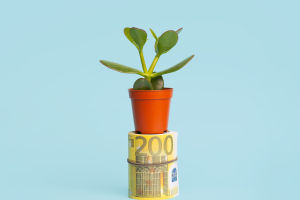Tea culture is presented in rich and colorful forms around the world.
From the types of tea, and brewing methods, to the etiquette and philosophy of the tea ceremony, tea deeply reflects the history, culture, and customs of different countries.
Although the origin of tea is widely believed to be in China, over time, tea has gradually spread to all parts of the world, with each country developing a unique tea culture.
Tea is not only a beverage but also a symbol of lifestyle and cultural traditions in many countries.
China, the birthplace of tea culture, boasts a long history and profound heritage. According to legend, the discovery of tea can be traced back to 2737 BC when Shennong accidentally found that tea leaves had fallen into boiling water, resulting in a fragrant tea soup.
As history progressed, China’s tea cultivation and tea ceremonies became more refined, leading to the development of various tea categories such as green tea, black tea, white tea, and oolong tea.
The Chinese tea ceremony emphasizes "harmony, tranquility, pleasure, and truth," which represents not only a form of tea art but also a reflection of a life philosophy.
Seeking tranquility and a connection to nature while drinking tea, and promoting harmony between people and tea, as well as between people and nature, form the core of Chinese tea culture.
In contrast to the leisurely tranquility of China, the Japanese tea ceremony is renowned for its strict etiquette and precise rituals. Influenced by Zen philosophy, the Japanese tea ceremony focuses on "harmony, respect, purity, and tranquility."
Each movement and step in the ceremony involves deep contemplation of nature and life. Every detail, from the layout of the tea room to the method of preparing the tea, carries a sense of ritual. Matcha, a finely powdered green tea, is the essence of the Japanese tea ceremony.
During preparation, tea leaves are ground into fine powder and whisked with hot water to create a delicate froth. The Japanese tea ceremony is not just about drinking tea but is also considered a process of self-cultivation. Participants experience a sense of calm and concentration throughout the ceremony.
As one of the world’s largest tea producers, India has developed its own unique tea culture. India's tea culture differs significantly from those of China and Japan, particularly through the country's signature "chai" or milk tea, which has become a global favorite.
Indian milk tea is brewed with black tea, milk, sugar, and various spices such as ginger, cinnamon, and cardamom, resulting in a strong, flavorful drink. Street-side tea stalls, or Chaiwalas, are a common sight across India, where people gather in small groups to enjoy the sweetness of chai.
In India, tea is more than a beverage; it represents socializing and daily life. Sharing a cup of hot tea with family and friends is an integral part of Indian culture.
On the other hand, British afternoon tea is synonymous with elegance and refinement. British tea culture was deeply influenced by China. In the 18th century, tea was introduced to Britain through the East India Company, quickly becoming a fashionable drink among the upper classes.
Afternoon tea in Britain is not just about drinking tea; it also includes a spread of delicate sandwiches, scones, and various desserts. Typically served at three or four o’clock in the afternoon, this tradition is still upheld among British aristocrats and in high-end hotels.
For the British, tea is more than a drink; it is a vital part of daily social interactions. Whether entertaining guests at home or taking a break from work, tea time is a cherished and relaxing moment for many.
Moroccan mint tea is another unique example of tea culture. Deeply influenced by Arab culture, Moroccan tea is not only a refreshing drink but also a symbol of hospitality. Mint tea is brewed with green tea, fresh mint leaves, and a generous amount of sugar, creating a blend of cool mint and rich tea flavors.
Tea sets in Morocco are elaborate, typically featuring intricately carved silver teapots and colorful glass cups. For Moroccans, tea is not just a beverage; it is a way of showing respect and warmth to guests, making it an essential element of social and family life.
Each country’s tea culture has its distinctive characteristics. Whether it's the Chinese tea ceremony, Indian milk tea, British afternoon tea, or Moroccan mint tea, tea is not just a thirst-quenching drink; it also carries the weight of profound cultural traditions.
Through tea, people can not only experience the customs and lifestyles of different countries but also feel a sense of connection across regions, cultures, and time.


